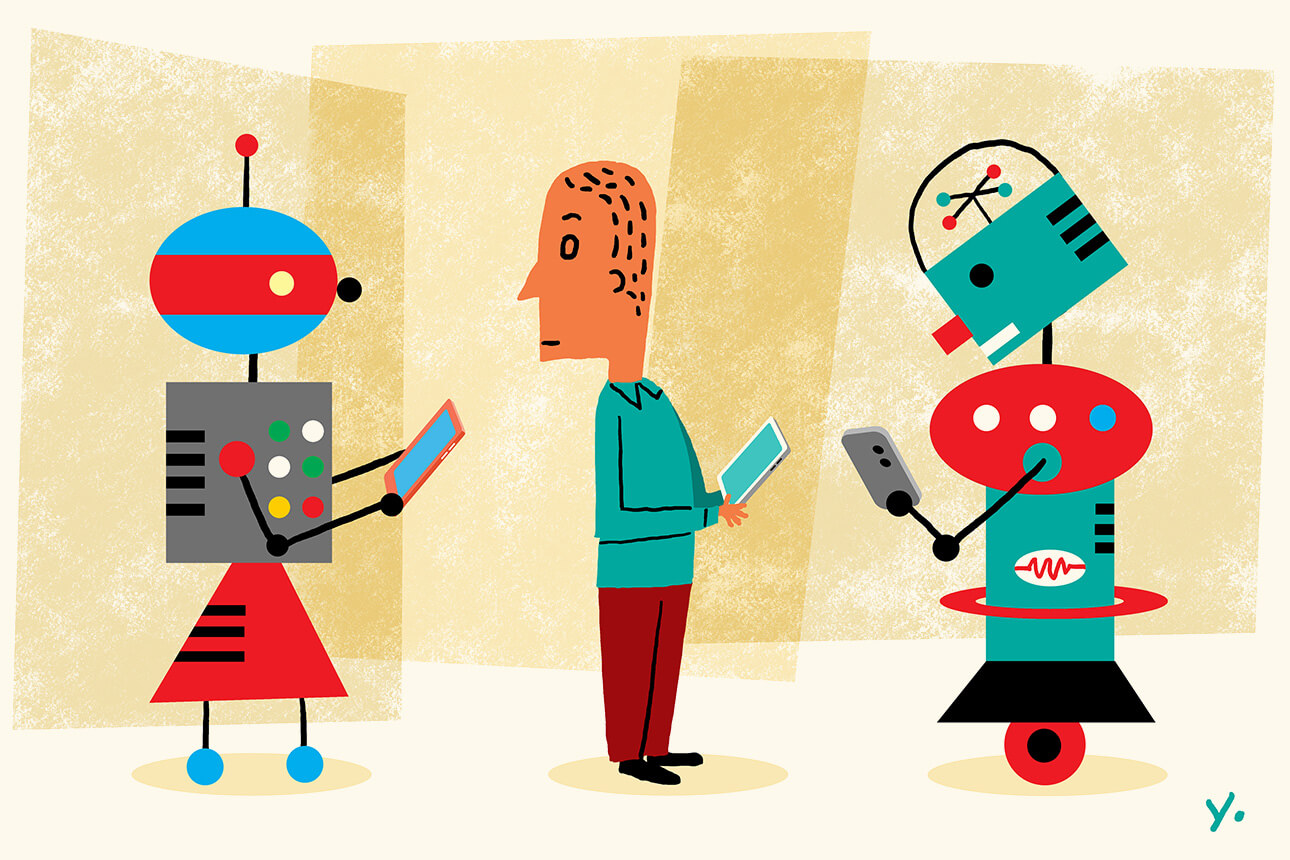AI Can Improve How Humans and Robots Work
The modern warehouse represents the frontier of human-robot collaboration.

James Yang/theispot.com
Teaming humans with robots delivers better results for warehouse operations than having only robots, but there are opportunities to improve that collaboration in the face of increasing demands for speed and accuracy in e-commerce fulfillment. A new framework describes four collaboration scenarios and points to how AI can be applied to optimize the performance of humans and robots working together.
Warehouse automation is booming as companies ramp up their use of robotics to deliver the lightning-fast logistics services required to meet today’s market demands. Teams of humans and robots will grow only more commonplace in these settings. By 2028, 80% of warehouses and distribution centers will deploy some form of robotics and/or warehouse automation, according to market research firm Gartner.1 But while these collaborations have improved operational performance, they are a long way from realizing their full potential.
Amazon, a company on the leading edge of warehouse automation, has faced ongoing complaints and criticism from employees in its fulfillment centers, who struggle to keep pace with the relentless speed of their robotic counterparts.2 The long-term pressure of working alongside robots has resulted in significant physical strain as well as serious accidents and injuries. A failure to address safety concerns among order pickers and other employees working within robotized systems can greatly erode their trust and willingness to collaborate. In this case, robots themselves are often underutilized, ultimately hurting efficiency and overall productivity.
Moreover, given that automation and robotics involve substantial capital investment and operating expenses, optimizing both human and robot resources to improve ROI is an imperative for warehouse managers. Studies have shown that having a mix of humans and robots can lead to greater efficiency, flexibility, and cost-effectiveness compared with full automation alone.3 But companies must carefully consider the respective roles that humans and robots should play in warehouse facilities.
These issues point to a critical need for innovation in the way humans and robots work together. While robots outperform humans in speed and precision, without effective collaboration, these advantages can be lost to system inefficiencies, dissatisfied and disengaged workers, and workplace hazards. Likewise, humans are inherently more flexible, adaptable, and creative than machines; a thoughtful approach to collaboration can maximize these strengths in highly automated work environments.
References
1. S. Tunstall, D. Klappich, R. Narang, et al., “Critical Capabilities for Warehouse Management Systems,” Gartner, Aug. 6, 2024, www.gartner.com.
2. A. Palmer, “Amazon’s Focus on Speed, Surveillance Drives Higher Warehouse Worker Injuries, Study Finds,” CNBC, Oct. 25, 2023, www.cnbc.com.
3. R. de Koster and D. Roy, “Warehouse and Logistics Automation Works Better With Human Partners,” Harvard Business Review, June 21, 2024, https://hbr.org.
4. B. Zou, R. De Koster, Y. Gong, et al., “Robotic Sorting Systems: Performance Estimation and Operating Policies Analysis,” Transportation Science 55, no. 6 (November-December 2021): 1430-1455, https://doi.org/10.1287/trsc.2021.1053.

